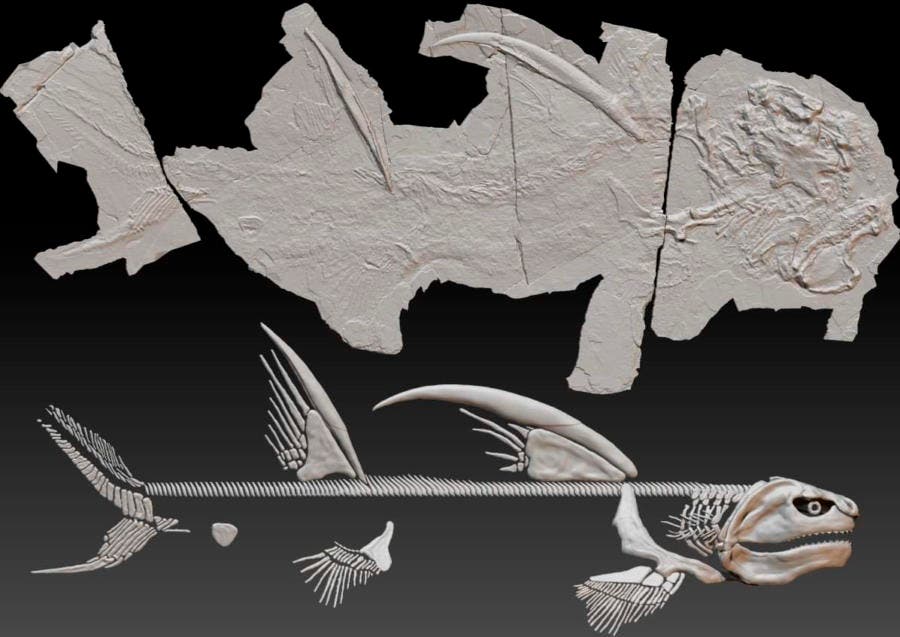A press release from the New Mexico Museum of Natural History and Science (NMMNHS) on Thursday announces, at long last, the scientific name of this impressive shark.

First discovered eight years ago, the species has so far been known by an unofficial (if cool) name: the “Godzilla Shark”. But researchers are now confident enough in their observations to place the animal on the tree of life, and with that, give it its official scientific name. The animal lived around 300 million years ago, during the Carboniferous period.
Big shark
The shark, uncovered in the Manzano Mountains of New Mexico, has been named Dracopristis hoffmanorum. It’s part of an ancient lineage that split off from the main family, but one which did not stand the test of time. It’s unofficial names include “Godzilla Shark” and “Hoffman’s Dragon Shark” in recognition of its big jaws, large spine, and in honor of the Hoffman family who own the land where the fossil was found.
“Dracopristis and other ctenacanth sharks represent a unique evolutionary branch of the sharks that split off from the modern sharks and rays approximately 390 million years ago, but that went extinct by the end of the Paleozoic Era, about 252 million years ago,” the museum explained in the release.
Judging from the fossils, the animal could grow to around 6.7 feet in length. It had 12 rows of teeth growing out from powerful jaws, and two large fin spines on its back that could reach an estimated 2.5 feet in length. These could have played a role as a defensive measure against predators, the team explains. The animal was most likely an ambush predator, lurking in shallow lagoons and estuaries where it would surprise prey like crustaceans, fish, and anything else it could find, with a tooth-lined maw.
Dracopristis was discovered by accident, when John-Paul Hodnett, a paleontologist at the Maryland National Capital Parks was poking through some limestone fragments with his knife in the Manzano Mountains to sift through them. “At first, I thought what was flipped over was the cross-section of a limb bone, which was exciting as no large tetrapod had been found at that site before,” Hodnett explains.
Still, a day later, Hodnett and his team were convinced that the discovery was in fact a new species of fish, most likely from the genus Ctenacanthus, which is today extinct. It eventually turned out to be the most complete ctenacanth ever discovered in the whole of North America.
The last seven years were spent studying the fossil, which included preparation and digital scanning at the NMMNHS’s labs. This allowed the team to describe the new fossil and identify its place in the tree of life.
The paper “Ctenacanthiform Sharks From The Late Pennsylvanian (Missourian) Tinajas Member Of The Atrasado Formation, Central New Mexico” has been published in the Bulletin of the NMMNHS.






